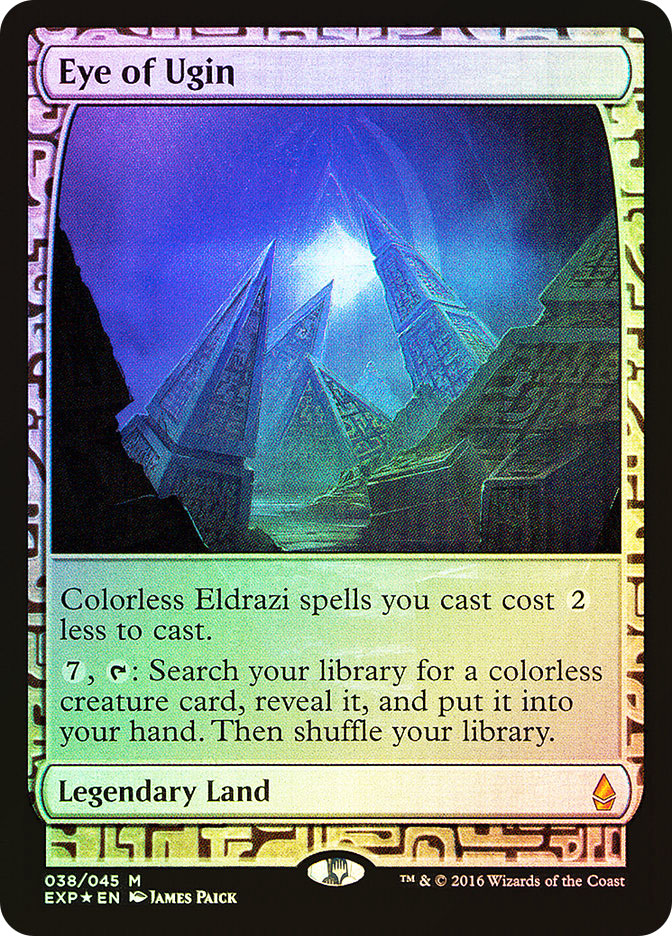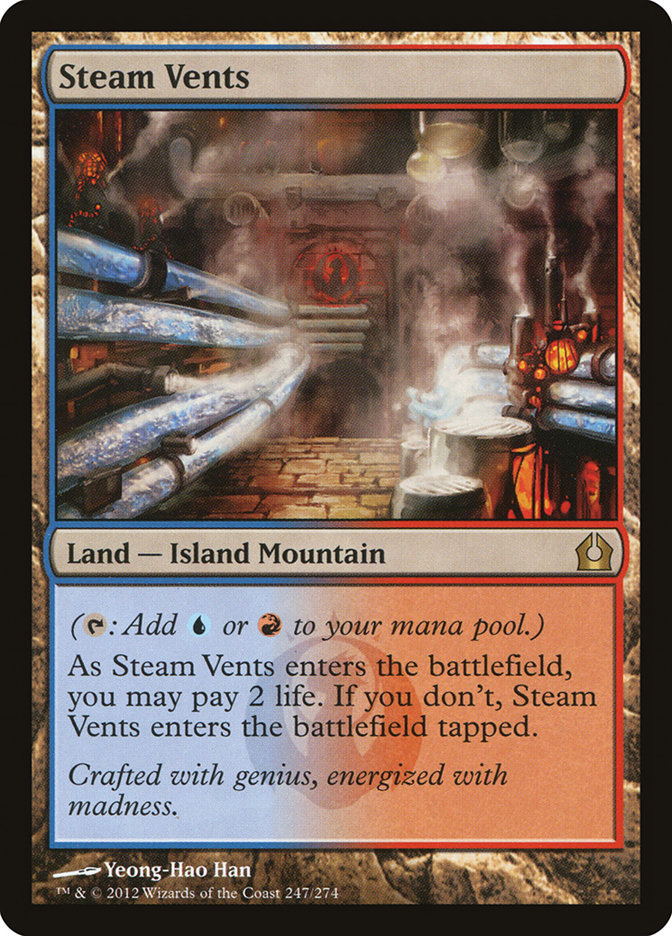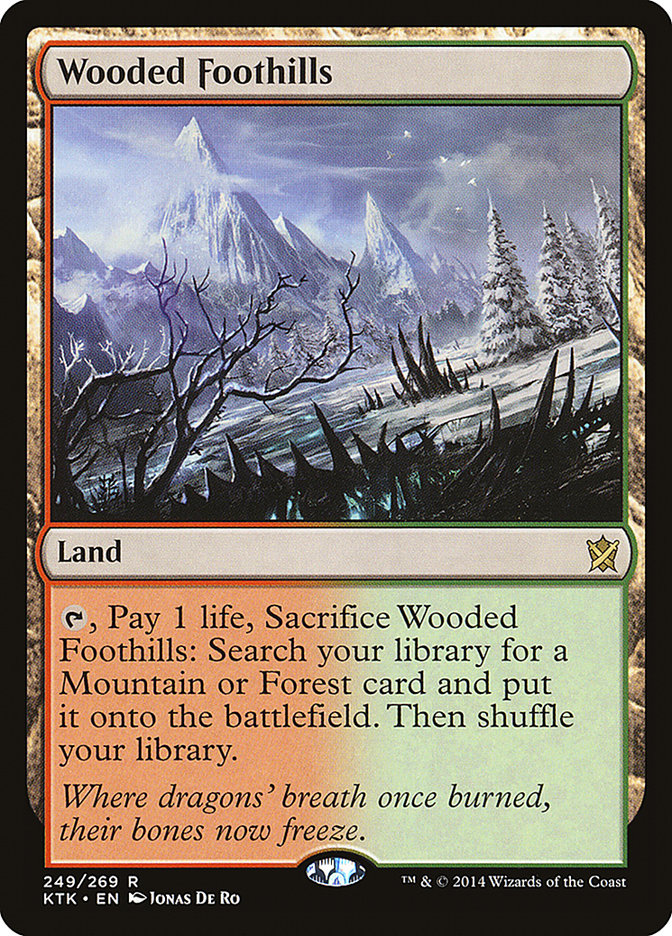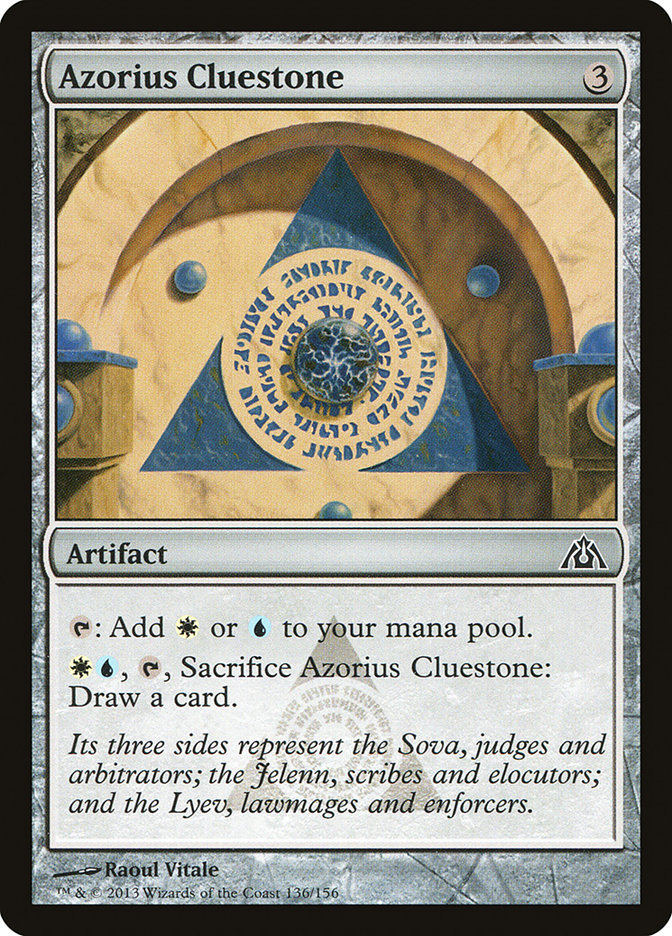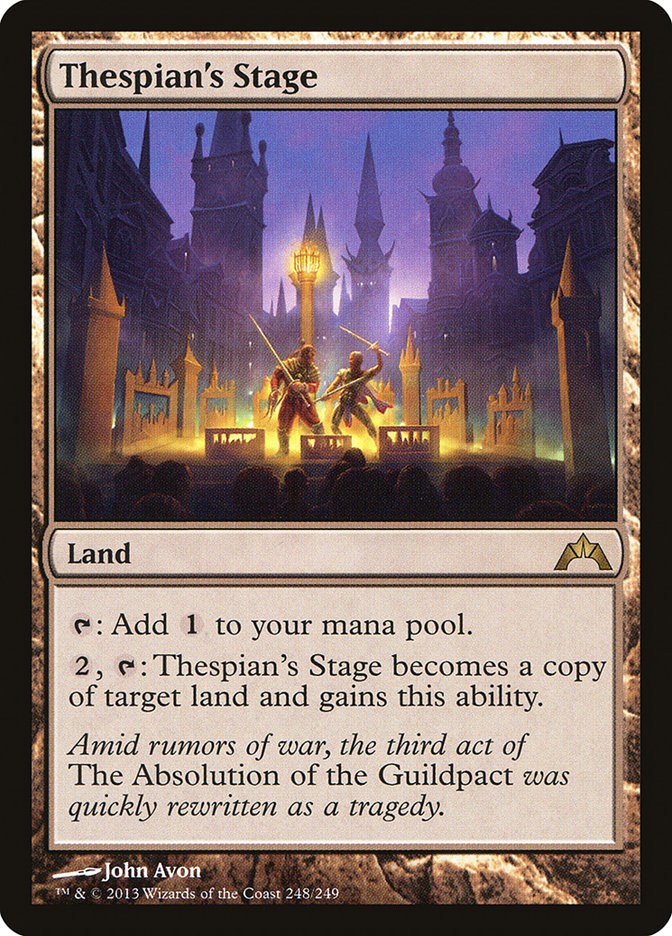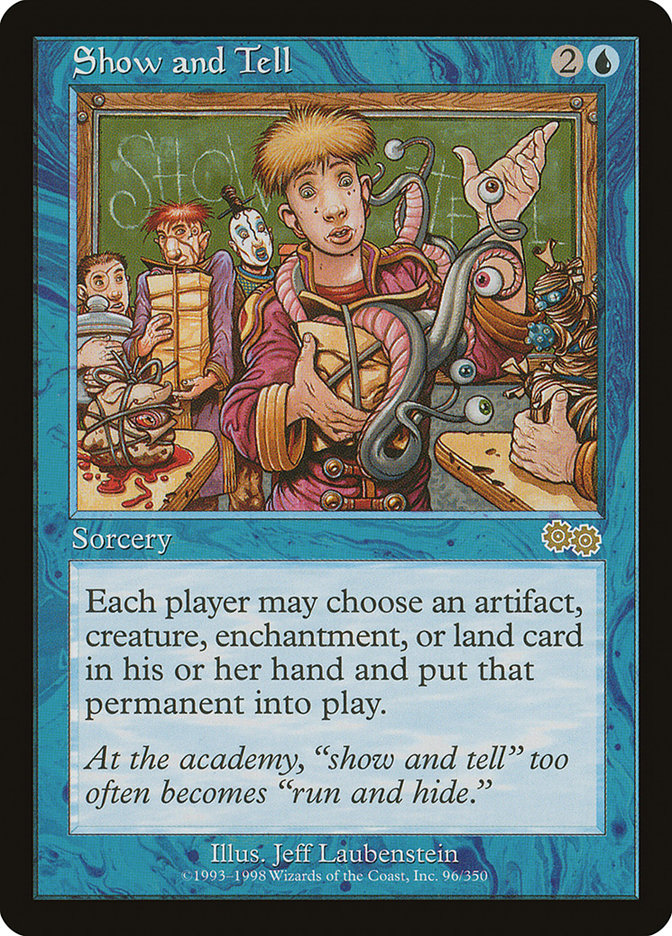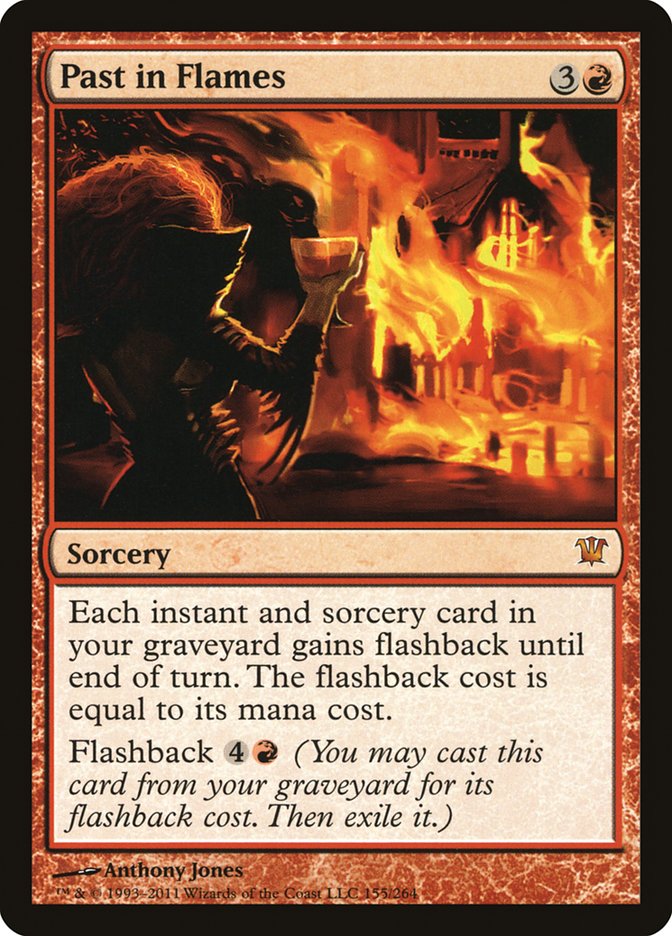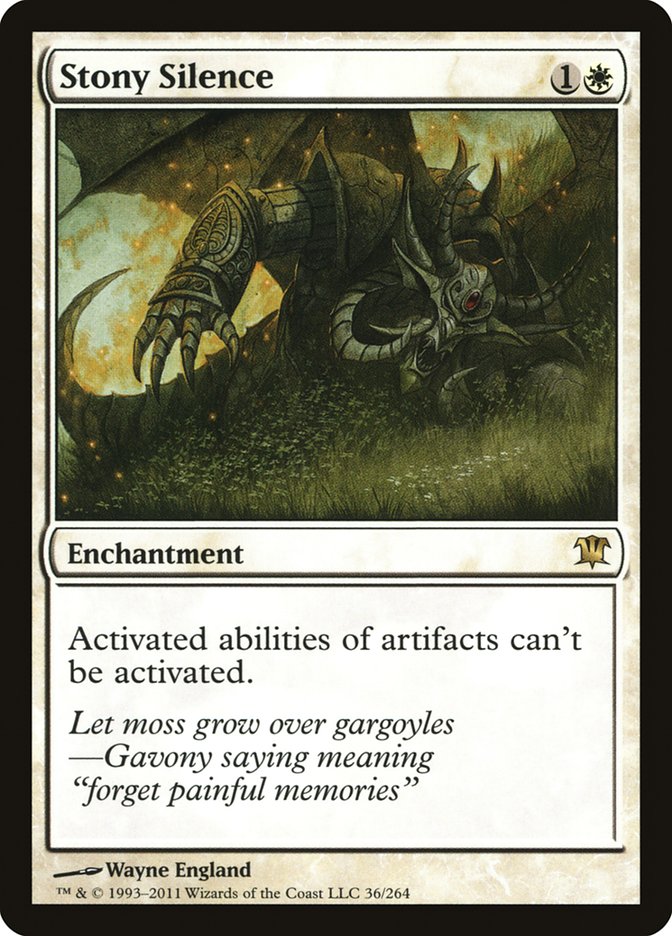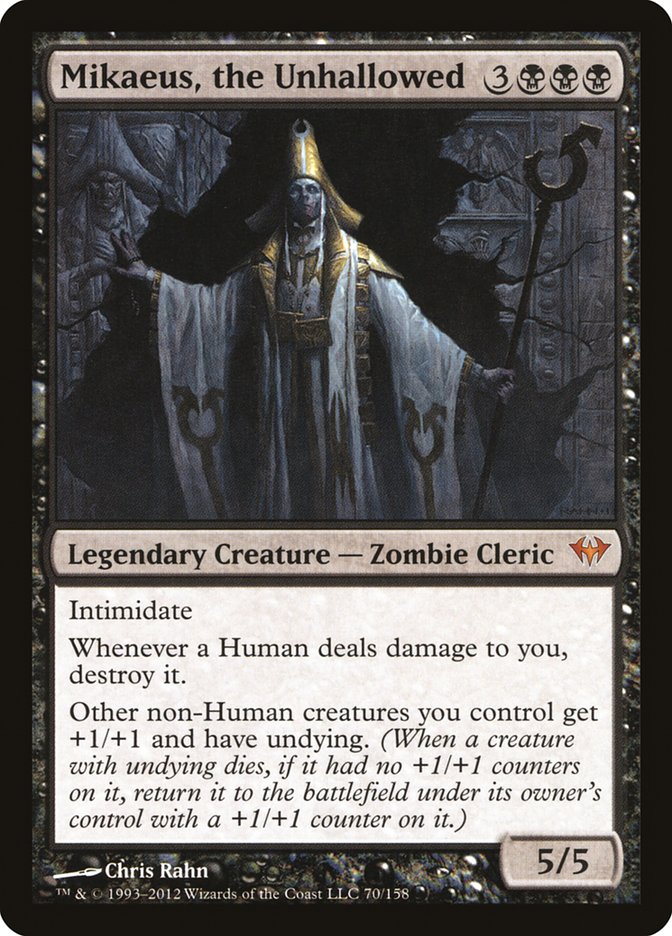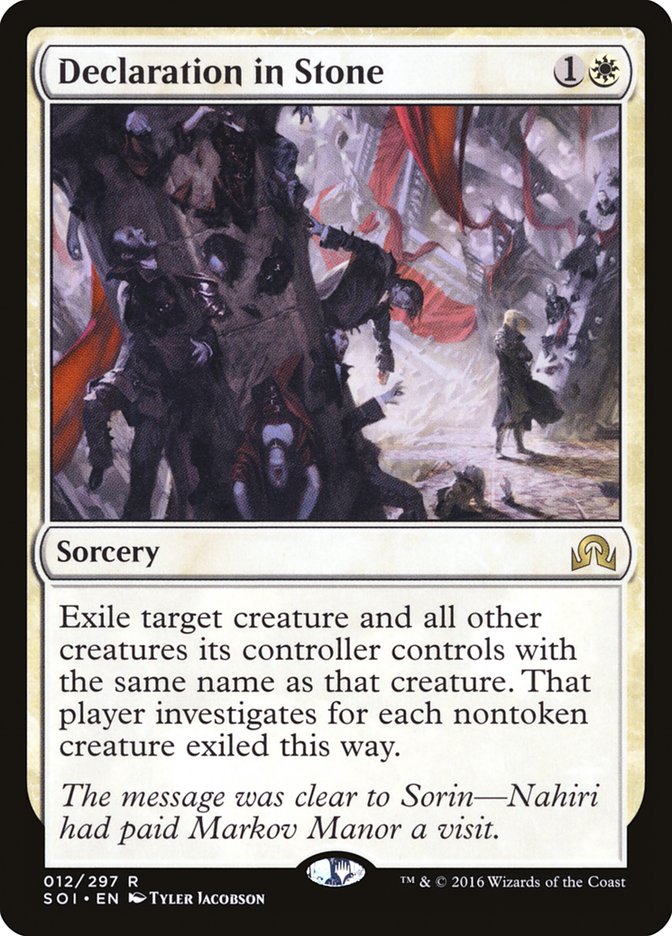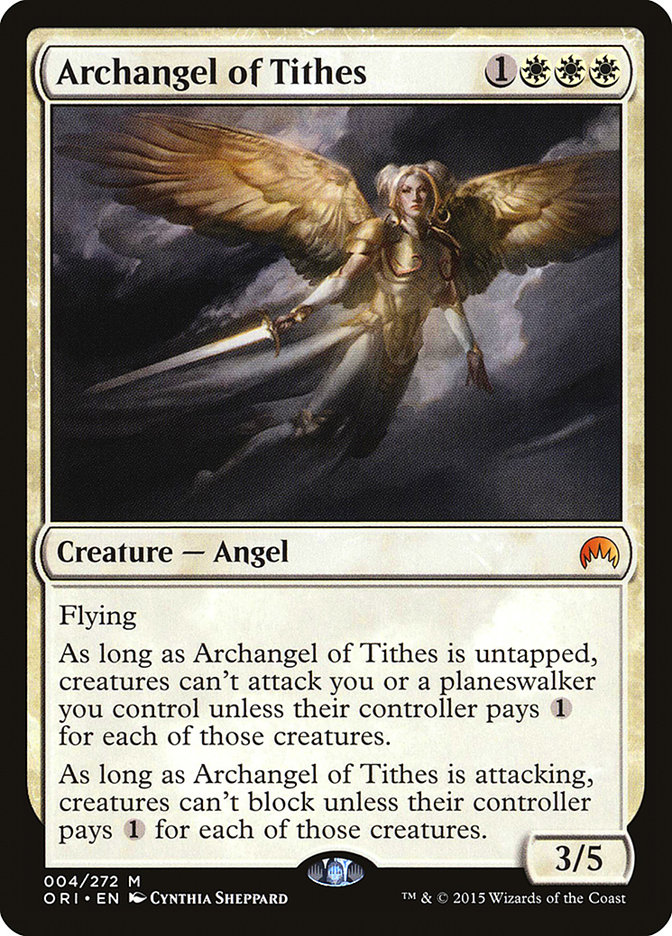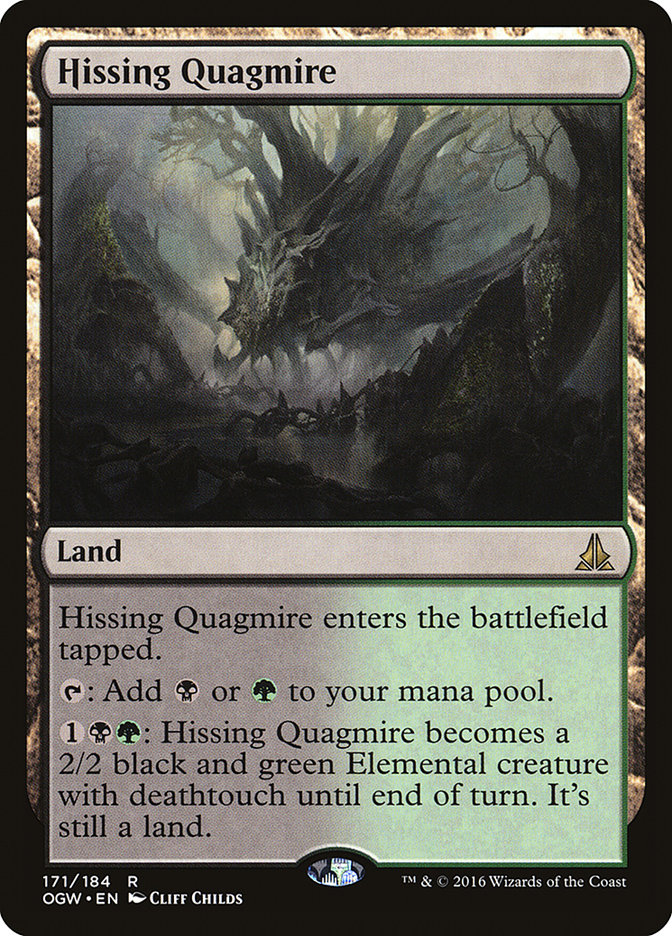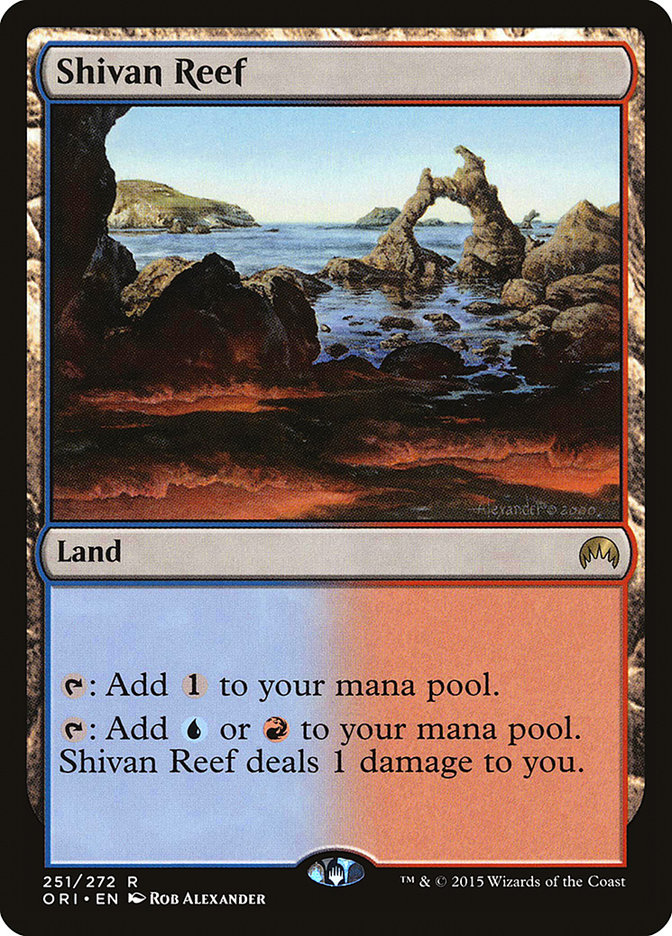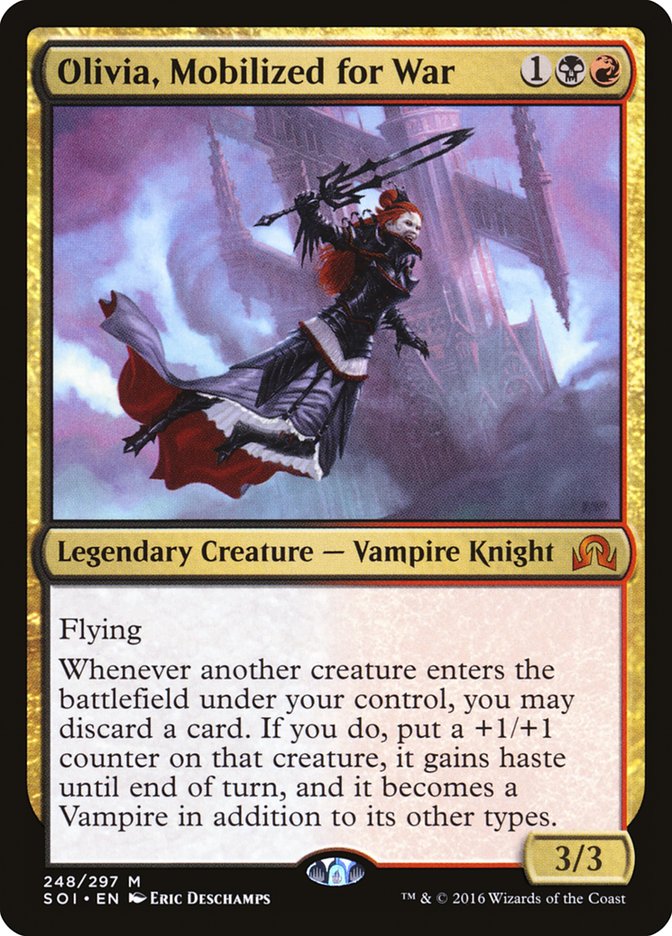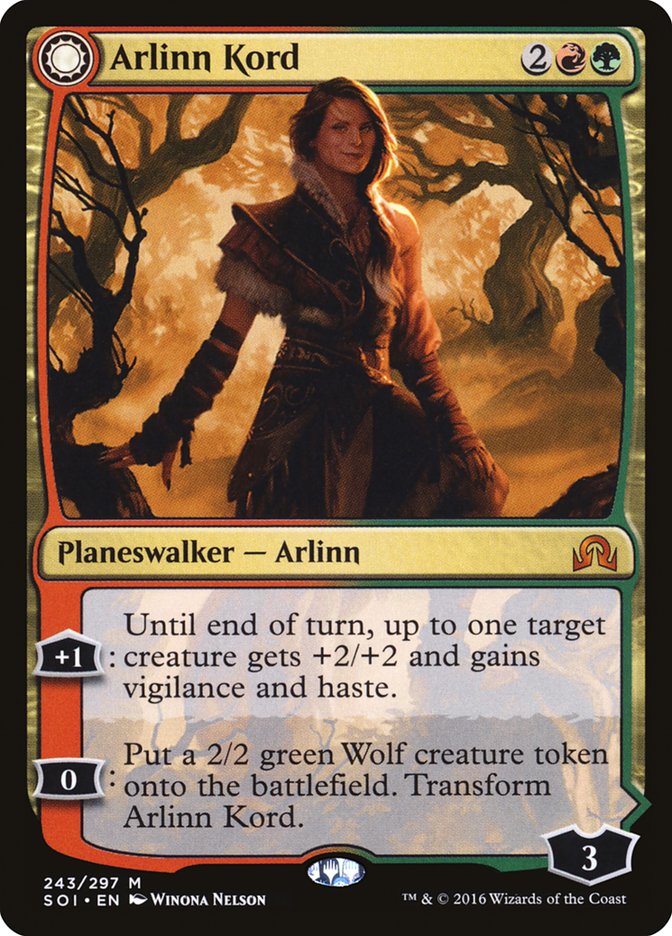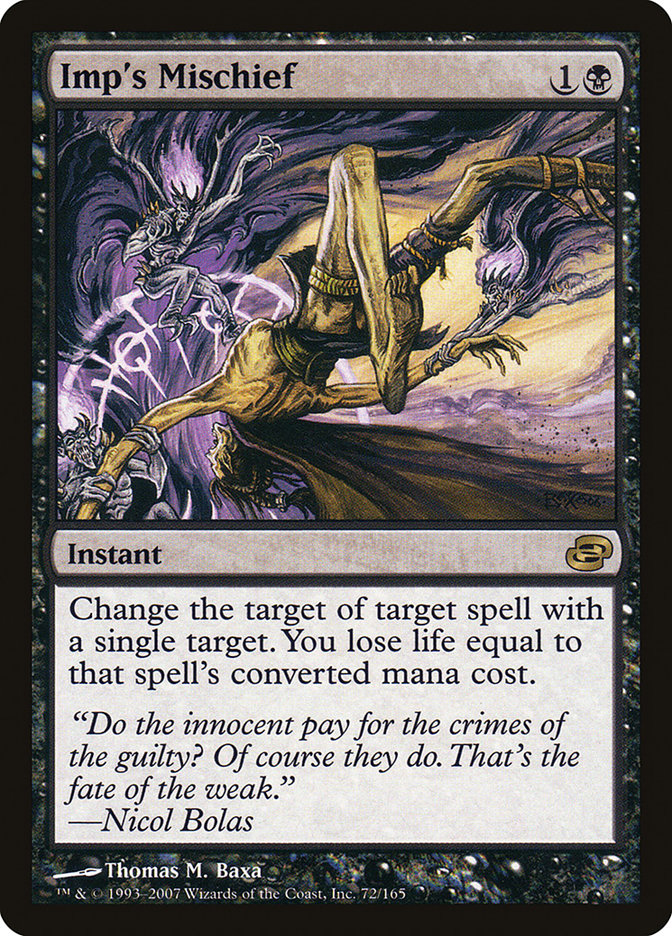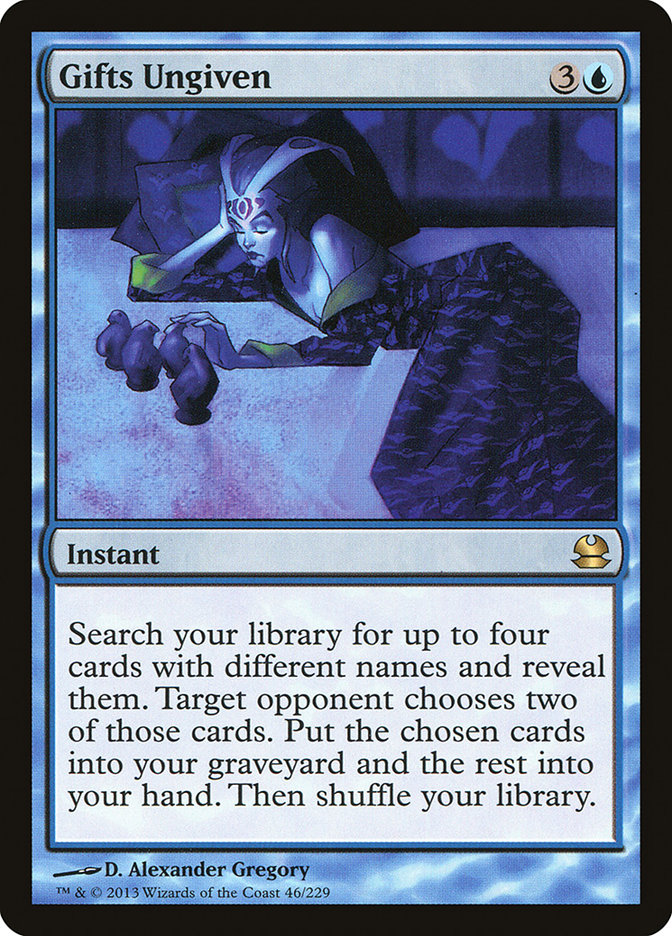Did you know that Facebook has a hidden mailbox? It’s true—many of my incoming messages have been sitting in limbo for years, filtered away as spam that I’ve never been able to see.
(You can view your own “hidden mailbox” by clicking on the Facebook chat icon, selecting “Message Requests,” and then clicking on “See filtered requests.”)
Today, I’m going to answer some lost reader questions that stretch back to the halcyon days of 2011. I chose some of the questions because the answers are still relevant, but most of the ones I chose to highlight are more interesting to examine after the fact. What can questions from the past tell us about the perils and pleasures of Magic speculation today? Let’s take a trip back in time and find out.
I was lucky enough to open an Eye of Ugin expedition, but am torn on what to do with it in expectation of some Eldrazi ban happening next month. I can trade it onto SCG for around $63 store credit right now and get some select non-rotating Standard singles, but I’m not sure if how is the opportune time to sell or to hold. Do you have any thoughts?
– Jake, 3/9/16
Hmm…some of these lost messages aren’t actually that old. This one has been lost for less than five weeks.
We all know what happened to Eye of Ugin, so let’s see how bad it would have been to hold Eye through the ban. StarCityGames.com is currently paying $50 in store credit for a NM Expedition version of Eye of Ugin, so in reality you didn’t lose out on all that much by waiting. There was a lot of upside in holding, too. If Eldrazi Temple had been banned instead, the Expedition would have probably gone up in price. That’s because its price was already artificially low since most people expected it to get the axe in Modern.
At this point, it’s worth holding your Expedition for the long haul. Eye of Ugin is a very good card in Commander and it’s playable in Legacy, so I can’t imagine the price will drop any further.
Actually, other than perhaps the Battle lands, I think all the Expeditions are good buys or holds right now. While there is a vocal minority who don’t like the look of them, most players do consider the Expeditions to be unique and beautiful cards. Since there were no expeditions in Shadows over Innistrad, I doubt we’ll see their return for quite some time. And the longer we go without new Expeditions, the more their price should go up.
I was wondering when I should pull the trigger on selling my shocklands. I was thinking of selling them about 2-3 weeks after Journey Into Nyx comes out. I intend on picking them up after rotation.
– Thomas, 4/9/14
Let’s refresh our memory a bit—Return to Ravnica block rotated out of Standard in September 2014, almost six months after this question was written. At the time, most shocklands were selling between $8 and $12 with a few sitting closer to $15 thanks to Standard playability. If Facebook hadn’t prevented me from seeing Thomas’s question, I probably would have advised him to sell according to his timeline—rotating cards tend to spend the summer dropping in price—and re-buy them in November. Would that have been good advice, though?
Steam Vents—the most Modern-relevant shockland—never saw a rotational drop-off. It was about $10 in April of 2014, and it went up to about $12 by November. These days, it’s a $20 card. Selling in May would have been a bad idea because there was no cheaper time to buy back in.
What about the other shocklands? Well, the other nine from Return to Ravnica and Gatecrash saw peaks in early to mid-May before falling off all summer. This means that Thomas’s plan of selling a few weeks after Journey into Nyx’s release was a solid one. Buying them all back in that fall wasn’t a bad idea, either—it’s not like the shocklands have gotten cheaper since then—but I doubt Thomas would have been happy with his return on investment so far.
Most of the shocklands have only started to rise in price over the past two or three months, and there are still loads of cheap Return to Ravnica and Gatecrash booster boxes on the market. It might still be quite some time before the demand for these lands really starts to outpace the market supply. I think we all underestimated just how many packs of current set product are sold, at least in comparison to competitive Modern demand. We probably also overestimated the importance of shocklands in the Modern metagame, especially once the other five fetchlands were made Modern-legal.
I still like shocklands as a long-term spec—they are finally starting to move now, after all—but I doubt they’ll ever approach the $30-$40 range again. I’ve still got quite a few of these socked away, but I’ll probably sell them if they ever show sustained life at or above the $20 mark.
This is also a relevant question when considering the Khans of Tarkir fetchlands, which have just rotated out of Standard. Considering how much more play they see than the shocklands in Modern, buying or trading for your playsets now makes even more sense.
Have you ever speculated during Pro Tours, and do you have any advice for doing so?
– Chris, 10/7/13
Pro Tour Shadows over Innistrad begins in less than a week, so this is still a relevant question two years later. Pro Tours can be unusually fruitful times for speculation, but you have to be careful what you buy and when.
First off, watching the streaming coverage is paramount. If a card looks powerful on-camera several rounds in a row, demand is going to spike very quickly. People want to play with cards that look good. It can be tempting to buy multiple copies of every bulk rare that shows up in the feature match area, but this can be a trap early in a tournament. If someone is on a rogue deck Day 1, it looks bad on camera, and they’re never featured again, the card probably won’t experience a spike in demand. Smothering Abomination from Pro Tour Battle for Zendikar is a good example of this kind of speculative dead end.
You can’t wait too long to pull the trigger, though. Long before the Top 8 is announced, every decent spec target will be sold out or at least prohibitively expensive. Paying close attention to what decks look great in the closing rounds of Day 1 is a good way to figure out the Day 2 metagame early. Looking at the archetype breakdowns and extrapolating that night is another way in. It can also help to figure out what each of the big pro teams is on as early as you can—if an entire elite team is playing a single deck and it has a couple of juicy spec targets in it, your odds of a price spike go way up.
What cards make the best spec targets? Assuming it’s a Standard Pro Tour, you want to focus on mythics, monocolored rares that have game in multiple decks, and cards in sets that haven’t been opened for a few months. Avoid narrow cards from the latest set—these tend to spike the lowest and drop the quickest because availability catches up with demand quite quickly.
Make sure you sell your spec targets as quickly as you can, too. You certainly won’t be the only person speculating on the event, so a few days after a Pro Tour, the market can flood with singles, creating a race to the bottom. My advice? Undercut everyone and get out. I’ll always trade a little bit of potential profit for a major risk reduction.
Lastly, I suggest only buying from reputable dealers (like StarCityGames.com) who have a reputation for not cancelling orders due to a price spike. I can’t tell you how many times I’ve had 80% of my spec orders cancelled by dodgy dealers who claim to have “oversold their inventory” or whatever. Pay a little extra for the knowledge that your cards will ship no matter what.
What do you think the average prices will be for Return to Ravnica, Gatecrash, and Dragon’s Maze boxes in 2-3 years? I want to stash away some boxes and I’m deciding which sets to buy and how many of each to get.
– Patrick, 6/1/13
It’s been almost three years, so let’s take a look at how this purchase would have gone. You can currently buy a Return to Ravnica or a Gatecrash booster box here on SCG for $99.99. If you want some Dragon’s Maze (you don’t), that one will only set you back $89.99. Ugh. That’s a far cry from, say, a box of original Innistrad, which is sold out at $349.99.
As you know, I’ve been beating the sealed box drum for years. I have at least two boxes of each Return to Ravnica block set aside myself, too. This was clearly a massive shift from what most of us expected the sealed box market to look like in 2016. So what happened?
First off, 2013 was right around the time everyone realized that hoarding sealed product was good for a guaranteed profit. We had just seen Innistrad and Rise of the Eldrazi boxes spike, and it seemed like sticking a booster box in the closet for two or three years was a can’t-miss proposition. This means that there are still plenty of Return to Ravnica block boxes out there for anyone who wants one.
Second, Return to Ravnica block might have had the biggest disconnect between expectations and reality of any set in the Modern era. The first Ravnica block had expensive shocklands and a draft format that consistently ranks among the top two or three of all time. The second had the shocklands as well… only this time, they were printed in quantities large enough to satiate demand for years. Return block also had a draft format that was forgettable at best as well as a dearth of other good Modern rares. This led a lot of people to sock away boxes of Return to Ravnica block in anticipation of future demand that has yet to materialize and possibly never will.
I still think that Return to Ravnica boxes will eventually be worth more than their purchase price, but it may take another three or four years to get there. In the meantime, I still like buying sealed boxes, but only as long as you’re focusing on the right set. Khans of Tarkir is my favorite target right now. Not only are the fetchlands better than shocklands by a great deal, but triple-Khans Limited was a beloved format. I expect these boxes to be worth at least $200 when we look back at this article in three years.
What do you think of Thespian’s Stage? It seems amazing at $1-$2 each. Worth buying into as a long-term Commander card?
– Tyler, 3/20/13
I still like Thespian’s Stage as a long-term Commander card, but I also didn’t expect it to take more than three years to hit the $4 retail mark. StarCityGames.com will buy these from you for $1 each right now, so your $1 purchase ended up being fairly risk-free, but this goes back to the problem of how long it has taken cards from Return to Ravnica block to experience any sort of long term growth.
This is a good lesson to learn about speculating in the current Magic economy, where player growth is relatively stable. You can’t just buy any random good card and assume it’ll be worth something two or three years later, which had been true during the era when the player base was doubling every year. These days, you have to be very discerning with the cards you buy and there is no guarantee of long-term success.
Is it a good time to buy Show and Tell, or is it at its absolute peak? And how likely is the card to get banned in the short term future? Should I not worry at all about that possibility?
– Frederic, 9/4/12
In September of 2012, Show and Tell was a $60-$70 card, roughly in line with its current price tag. It spiked as high as $100 in the spring of 2014, and it has never really been available cheaper than it was three-and-a-half years ago. This means that Frederic was looking at Show and Tell on its way up and buying a copy that September would have been the right play.
This Show and Tell question is an interesting reminder that it can be right to buy into hype at times. Show and Tell is a fairly unique case, though—it’s a Reserved List card, the flagship of a very good deck, and it only gets better with each new and powerful creature that’s printed.
While most hyped cards are at risk of falling back to earth pretty quickly, you can see why Show and Tell has withstood the pressures of time. In fact, I kind of like it as a spec buy right now—it’s not going to be in Eternal Masters, after all, and it’s still a major part of the Legacy metagame.
What about the ban that Frederic was fearing? Exactly two cards have been banned in Legacy since Frederic’s question: Treasure Cruise and Dig Through Time. Unlike in Modern, it’s very hard for a card to get the axe in Legacy and it will be very obvious when it does happen. This is still not something worth worrying too much about when investing in a Legacy deck.
What is the best way to protect your cards while still being able to play with them? It seems like they will get scuffed and scratched even in sleeves. I have a Monster binder which I keep my cards in, but it seems pretty likely they will get bent in there since they tend to slide around. What do you do?
– Christopher, 8/20/12
Christopher, I like using KMC Perfect Size inner sleeves for my Cube and all of my competitive decks. Not only do they protect against scuffing, but they’re a lifesaver when someone spills a soda or a beer on the table. I tend not to worry about this for random $5-$20 cards in my collection, but I do use inner sleeves on all of my dual lands, Expeditions, etc.
I wouldn’t worry too much about cards getting bent in a binder unless you’re repeatedly shoving it into too-small backpacks. The real risk comes when you spend too much time moving cards in and out of binders (which can lead to scuffing) or dings if you’re using a binder with hard metal rings.
My rule of thumb is to avoid any binder with “C” rings (rings shaped like a circle) to store cards—instead, I use binders with “D” rings, which have a flat side for the plastic nine-pocket pages. Better yet, you can use soft pocket binders made for long-term Magic storage—I don’t love Monster binders, but I do like their Ultra Pro analogs. I also recommend sleeving everything you put inside your binder, too. If you’re really worried about scuffing, this will prevent he problem entirely.
What cards are the best long-term investments from Innistrad and Dark Ascension?
– Kieran, 4/9/12
It’s too late to give Kieran any good advice on which cards to buy from these two sets, but I thought we could take a quick look at the Innistrad and Dark Ascension cards that ended up being good long-term holds. Is there anything on the list that would have been surprising four years ago? Should you just have bought a playset of everything and called it a day? Remember that April 2012 was several months before each of these sets rotated out of Standard, so we’re not talking about post-rotation specs here. We’re only talking about cards that gained value despite leaving Magic’s most popular format.
The two most valuable cards in Innistrad—by far—are Liliana of the Veil and Snapcaster Mage. No shock there. Everyone knew these would be slam-dunk Eternal staples, and they haven’t failed to live up to their lofty expectations.
Assuming we aren’t falling victim to the overprinting issues we discussed in the Return to Ravnica section, this bodes well for the future of cards like Collected Company and Jace, Vryn’s Prodigy. The best Modern cards in a set often don’t lose value after rotation for long, if at all.
Beyond that, there are five Innistrad cards in the $10-$15 range: Stony Silence, Geist of Saint Traft, Sulfur Falls, Past in Flames, and Olivia Voldaren. Olivia and Geist were actually worth more in 2012, so they were poor long-term buys. Sulfur Falls is expensive because U/R was the best color combination in Modern for several years.
Past in Flames and Stony Silence were the best buys on this tier. Both were under $2 four years ago, and Stony Silence was generally available as a bulk rare. Past in Flames was a relatively obvious spec buy—it saw occasional Legacy play, and even Casual Storm cards are good long-term investments. Hitting on Stony Silence would’ve required a better predictive mind than mine, though. Who could have foreseen it becoming the most important sideboard card in Modern?
Beyond that, there are a number of cards in the $5-$10 range: Balefire Dragon, Parallel Lives, Bloodline Keeper, Garruk Relentless, Woodland Cemetery, Hinterland Harbor, Gavony Township, Mayor of Avabruck, and Clifftop Retreat. Garruk and the Innistrad dual lands were all more expensive in 2012, so we can take them off our list of good long-term buys. Balefire Dragon spiked when Dragons of Tarkir was announced, so it was another beneficiary of future circumstance. Parallel Lives was one of those cards that everyone knew would be a great long-term buy, so its success was a little more obvious four years ago. Mayor of Avabruck was a dollar rare for years, only spiking now that it has more Humans and Werewolves to combo with in Shadows over Innistrad.
What about Dark Ascension? Well, Mikaeus the Unhallowed is the most expensive card in the set, which would have been difficult to see coming in 2012 when it was easily available for under $5. It has done nothing but rise in price since then, mostly due to its prowess in Commander and Casual Zombie decks. The only other good buy in this set was probably Grafdigger’s Cage, which has roughly tripled in price from $1.50 to $5. Most of the other expensive cards in the set—Sorin, Lord of Innistrad; Huntmaster of the Fells; Thalia, Guardian of Thraben; Gravecrawler; and Geralf’s Messenger—are actually worth less now than they were in April 2012.
Where does that leave us? The cards that were obviously good in Modern were expensive then, and they’re more expensive now. Some of the good Commander cards were expensive then, and some were cheap; they’re all expensive now. A few more cards broke out due to shifts in the Modern metagame, but most of the cards that were pricey in 2012 due to Standard play are worth far less now. The moral of the story seems to be to bet on the sure thing (Liliana of the Veil and Snapcaster Mage) or the cheap rare/mythic with upside. Avoid the $5-$10 Standard rares that haven’t seen any Eternal play yet—they’re traps more often than not, and you should try to sell them prior to rotation.
The reason I’m messaging you is I recently happened upon a foil Richard Garfield, PhD and if you’re still interested message me back.
– Andrew, 8/20/11
Andrew,
I am still interested as long as you are still willing to honor those sweet, sweet 2011 prices.
Kind regards,
Chas Andres
I find a great deal of players will highly overpay for an altered art card if it is something in their deck or it has some sort of sentimental value to them. Are there any opportunities here?
– Quinn, 8/4/11
There sure are. In fact, they opportunities are probably greater in 2016 than they were back in 2011. Back then, more people were willing to pay a little more for the convenience of a local trade rather than going online to buy and sell cards. These days, most people balk at trading for anything higher than the lowest available online price.
Having something truly unique—like a special alter—is a great way to break through that mentality and foster a deal. The problem is that it requires a high cash or trade outlay (good alters aren’t cheap) and you might have to wait and wait and wait until you find the right buyer. This kind of move is probably best for traders who attend a lot of big events and end up having a lot of different people look at their binder. If you’re attending the same FNM every week with the same fifteen people, you may end up holding onto that special alter long after its period competitive relevance has come to an end.
This Week’s Trends
Let’s start with Standard, which experienced a major shakeup in the wake of the first week’s tournament results.
Even though Jim Davis’s Bant Company deck won the Standard SCG Tour® last weekend, W/X Humans was the breakout deck(s) of the event. In response, we’ve seen spikes from Archangel Avacyn; Archangel of Tithes; Declaration in Stone; Kytheon, Hero of Akros; Tireless Tracker; and Thalia’s Lieutenant. Knight of the White Orchid, Dragonlord Ojutai, and Always Watching saw small gains thanks to the deck’s success as well.
At this point, we’re going to have to wait and see how Humans evolves. Is the best build very aggressive? More tempo-based? Does it have a transformative sideboard? I’m sure several versions of Humans will do battle at the Pro Tour later this week, and we’ll all learn what color pairs best with white in this deck—at least for now.
It’s unlikely that any of these cards can go up in price from here regardless of how the deck ends up doing at the Pro Tour. Unless Humans is oppressively Tier 1 for the next few months, most of these cards are at their absolute peak thanks to a ton of demand and low supply (we’ve only been drafting Shadows for a few weeks at this point). Unless you are playing this deck imminently, sell into hype.
Other gainers from last week: Chandra, Flamecaller; Kalitas, Traitor of Ghet; Liliana, Heretical Healer; Deathmist Raptor; Dragonlord Atarka; Secure the Wastes; Pyromancer’s Goggles; Ob Nixilis Reignited; Sylvan Advocate; Smoldering Marsh; Cinder Glade; Sunken Hollow; Prairie Stream; Canopy Vista; Shivan Reef; Dromoka’s Command; Languish; Linvala the Preserver; Hissing Quagmire; Ojutai’s Command; Drownyard Temple; and Anafenza, Kin-Tree Spirit.
Some of these cards—Kalitas, for example—are rising more due to the overall renewed interest in Standard than having found a solid home in a Tier 1 deck. This tends to happen during the first few weeks of a new format, and it’s a great time to make beneficial trades for “cold” cards like the Khans of Tarkir fetchlands. That isn’t to say that all of these cards are about to fall off or anything; I expect the Battle lands to keep going up in price. Ditto cards like Chandra, Flamecaller and Sylvan Advocate which continue to prove themselves key pieces of Tier 1 Standard decks.
What’s falling in Standard? In Shadows, the biggest losers are Arlinn Kord; Jace, Unraveler of Secrets; Mindwrack Demon; Nahiri, the Harbinger; Olivia, Mobilized for War; Relentless Dead; Ulvenwald Hydra; Sin Prodder; and Westvale Abbey. This could all change once we see what the pros bring to the big stage next week, so keep these cards in mind as we go forward. It’s also worth noting that Westvale Abbey had a great weekend in Baltimore last week; it just couldn’t sustain that crazy $20 price tag. Don’t sleep on this card going forward, because it’s likely to remain a major player in Standard.
Over in Modern, Imp’s Mischief was bought out because it saw a little play as a sideboard card against Ancestral Visions. Sell this one into hype. I don’t think this tech is good enough to see widespread play going forward.
Gifts Ungiven, Academy Ruins, and Krark-Clan Ironworks also saw some big gains last week thanks to their interaction with the Thopter/Sword combo. Of these, Gifts Ungiven seems to have the best chance to stick—I’ve been seeing some really interesting speculative builds focused on the card, and it will likely be a flagship enabler if it ends up working. I doubt most Thopter/Sword decks want more than one or two copies of Academy Ruins, and I don’t think Krark-Clan Ironworks is actually necessary in competitive play; the combo kills quickly enough without it.


